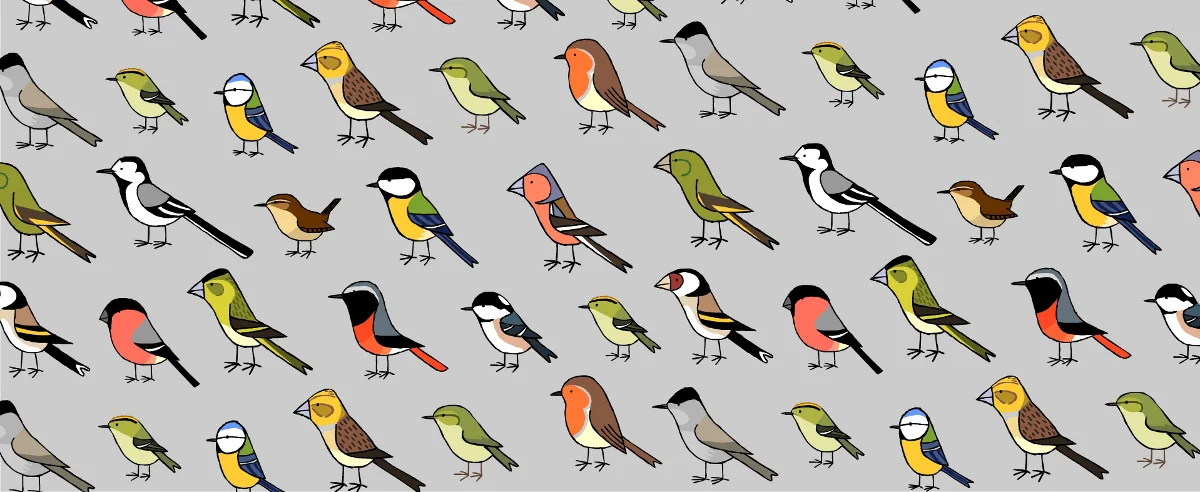Bluebirds Part one:
In the past week, we have noticed a significant uptick in Eastern Bluebird activity, both at our boxes, and in questions from customers at the shop. This week, let’s take a deep dive into one of our most popular birds… The Eastern Bluebird.
Putting Your Mind at Ease
Before we begin this deep dive, I would like to attempt to put some of your mind’s at ease. There are numerous misconceptions about Eastern Bluebirds, with many online sources making them out to be delicate birds that must have extremely specific requirements to breed and survive. This is simply not true. As we all tell folks daily during spring and early summer, if Bluebirds were as picky as they’re made out to be, they would have gone extinct well before the arrival of people and the invention of nest boxes. On the contrary, Eastern Bluebirds are hardy, adaptable birds that can be found from Nicaragua to Canada. Speaking of adaptability, we have even seen them build a nest in a cinderblock! As an experiment, we set up a box that was too damaged to sell, behind the store in the shopping center’s service alley. It is mounted on a fence right next to the trash and recycling dumpster, facing due northwest, where we and the Sam’s Place employees park. According to “bluebird literature,” we should have no success in this location. Flying in the face of this, however, we have had multiple successful nestings in this box in the two years we have had it up, and we have already had bluebirds investigating it again this year.
Male Eastern Bluebird
Photo Credit: Eli Haislip
Nesting
While bluebirds will utilize nesting boxes during cold winter nights, they will begin seriously investigating them, sitting on the roof and going in and out as early as February. At the earliest, nest building can begin in March. As of typing this, John has even had a completed nest built in one of his boxes at his home in Cheatham County! However, for most of us, bluebirds will begin nesting in mid April. However, just because you don’t get a nesting during this time frame doesn’t mean that you have missed the boat. Bluebirds will nest up to three times in a season, all the way into August so there is plenty of time to attract a pair!
Bluebirds in Fall Investigating a Box
Photo Credit: Eli Haislip
This brings us to my next point. Bluebirds are not the only birds that will use a “bluebird” box. Any cavity nesting species will utilize a bluebird box. This list includes Chickadees, Titmice, Tree Swallows, and House Sparrows. (There are others, such as Downy Woodpeckers and even Great-crested Flycatchers, but these are less common.) With the exception of the House Sparrow, which I will cover in a later blog, we encourage folks to let these birds use your boxes. While we understand that you want to see Bluebirds, these are native species to Tennessee too, and they can offer an excellent opportunity to learn about some of the other species that call our yards and gardens home. Most of these birds will only nest once, and typically earlier in the season which means you still have months to attract bluebirds after the other bird’s young have fledged!
Tufted Titmouse Using a Bluebird Box
Photo Credit: Eli Haislip
The first nest can sometimes take several weeks to build, with subsequent nests taking as little as a day or two to construct. Depending on what is available to them, bluebirds commonly use fine grasses or pine straw. Bluebirds lay three to six light blue, sometimes white, eggs. One egg is laid per day until completion, and then incubation begins. Incubation takes 12-14 days. After the eggs hatch, the young birds will grow rapidly, going from small, helpless, featherless birds with their eyes closed to fully developed bluebirds that are ready to leave the nest. This second phase takes 14-16 days. After the young have left the nest, they will not return and the birds will have no further use of the nest. We then strongly recommend that you remove the old nest material to reduce the risks of insect infestations or disease.














